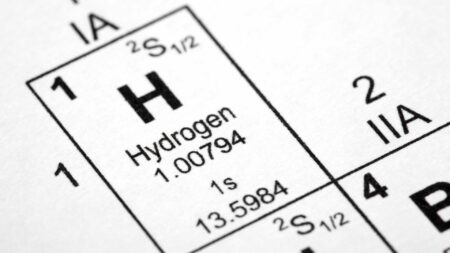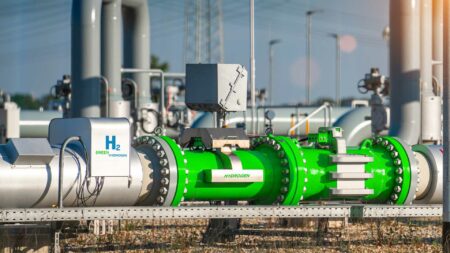India has recently made significant strides in the green hydrogen sector, awarding tenders for 412,000 tonnes of green hydrogen production and 1.5 gigawatts (GW) of electrolyser manufacturing capacity.
These efforts are part of the National Green Hydrogen Mission, overseen by the Ministry of New & Renewable Energy (MNRE). Announced at the World Hydrogen Summit 2024, these initiatives aim to position India as a global leader in green hydrogen production.
The Strategic Interventions for Green Hydrogen Transition (SIGHT) program under the National Green Hydrogen Mission allocates ₹4,440 crore for electrolyser manufacturing and ₹13,050 crore for green hydrogen production from FY26 to FY30. The total financial incentive of ₹17,490 crore is designed to scale up production, foster technology development, and reduce costs.
India’s goal to establish a robust electrolyser manufacturing base is critical for self-sufficiency in green hydrogen production. However, the technology and infrastructure required to produce electrolysers at competitive costs need significant development. Comparatively, countries like the United States and Germany, with more advanced technological bases and higher R&D investment, are already ahead. India must not only catch up but also innovate to create cost-effective and efficient electrolyser solutions.
Allocating ₹13,050 crore for green hydrogen production aims to leverage India’s cheap renewable energy sources. However, the feasibility of producing green hydrogen at the targeted cost levels, especially in the context of global competition, remains uncertain. Achieving the projected 5 million tonnes per annum production capacity will require overcoming significant technological, logistical, and financial hurdles.
India’s renewable energy capacity, expected to add about 125 GW in support of green hydrogen production, is ambitious. Integrating this capacity into the existing grid and ensuring a consistent and reliable energy supply for hydrogen production poses considerable challenges. The variability of renewable energy sources like solar and wind necessitates advancements in energy storage and grid management technologies.
Developing a comprehensive supply chain for green hydrogen, from production to distribution, is critical. This includes establishing infrastructure for storage, transportation, and refueling. India’s existing infrastructure is not yet equipped to handle the extensive requirements of a green hydrogen economy. Substantial investment and strategic planning are needed to build this infrastructure, along with regulatory frameworks to support it.
The MNRE projects that the green hydrogen initiative will avert nearly 50 million tonnes of CO2 emissions annually. This is a significant contribution to India’s climate goals. However, the actual environmental impact will depend on the efficiency and sustainability of the entire production and supply chain. Ensuring that the hydrogen is indeed “green” requires stringent adherence to renewable energy sources and minimizing emissions throughout the production process.
India aims to reduce its fossil fuel imports by ₹1 lakh crore by 2030 through green hydrogen. While this is a commendable goal, the economic viability of green hydrogen needs careful assessment. Competing in the global market requires not only achieving production targets but also ensuring that green hydrogen is cost-competitive with other forms of energy, including traditional fossil fuels and emerging alternatives like blue hydrogen.








